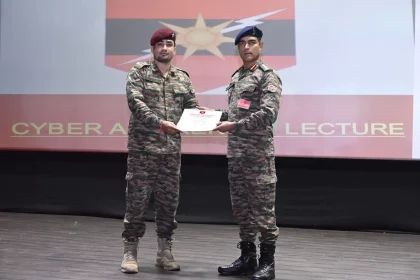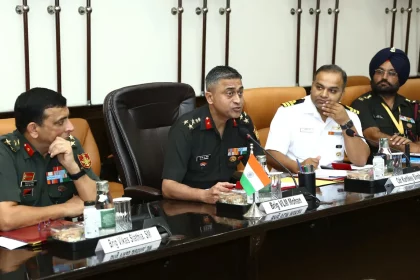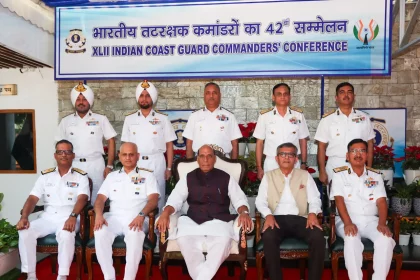Lt Gen Pratik Sharma Reviews Operational Preparedness in Siachen, Eastern Ladakh and Karakoram Pass
Northern Command Chief Commends High Readiness and Mountaineering Feat in Extreme Terrain.
Army Cyber Group Conducts Comprehensive Cyber Security Training at Sapta Shakti Command
Training programme equips soldiers with skills to tackle cyber threats, frauds, and digital intrusions.
India, Germany Hold 18th Military Cooperation Sub Group Meeting in New Delhi
Talks focus on logistics, joint training, military medicine, and hardware collaboration.
Surg Rear Admiral Ajit Gopinath Assumes Charge as Additional Director General Medical Services (Navy)
Veteran naval doctor and seasoned medical administrator to steer Navy’s healthcare services.
Defence Minister Calls for Futuristic Roadmap & Technological Vigilance at ICG Commanders’ Conference
ICG urged to craft roadmap for 2047, strengthen surveillance, and integrate AI-driven security systems.
Rank Never Retires: How Veterans Should Correctly Write Their Rank and Name?
For veterans, correct formatting is crucial in official documents, business cards, emails, and social media profiles. The standard format is:…






